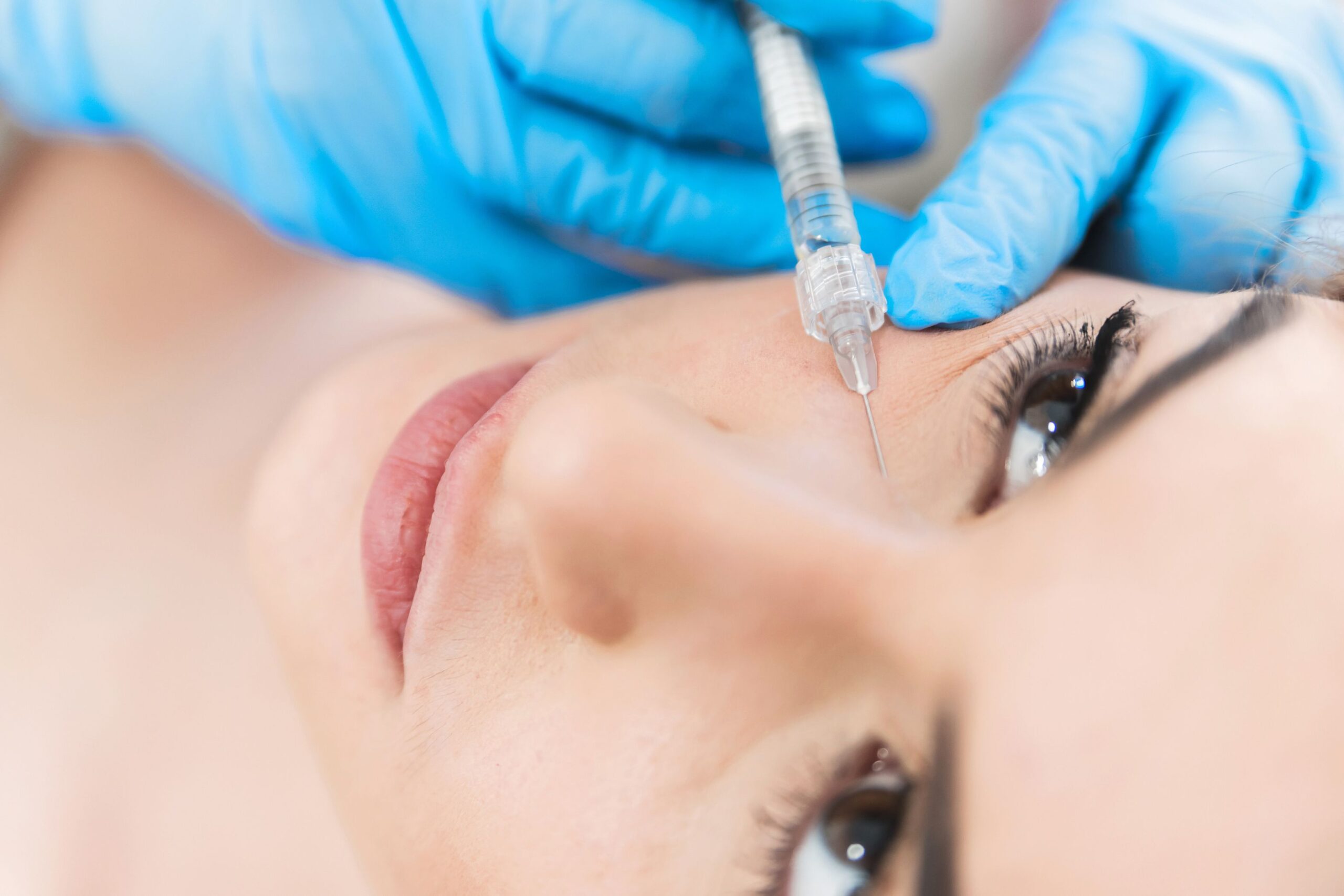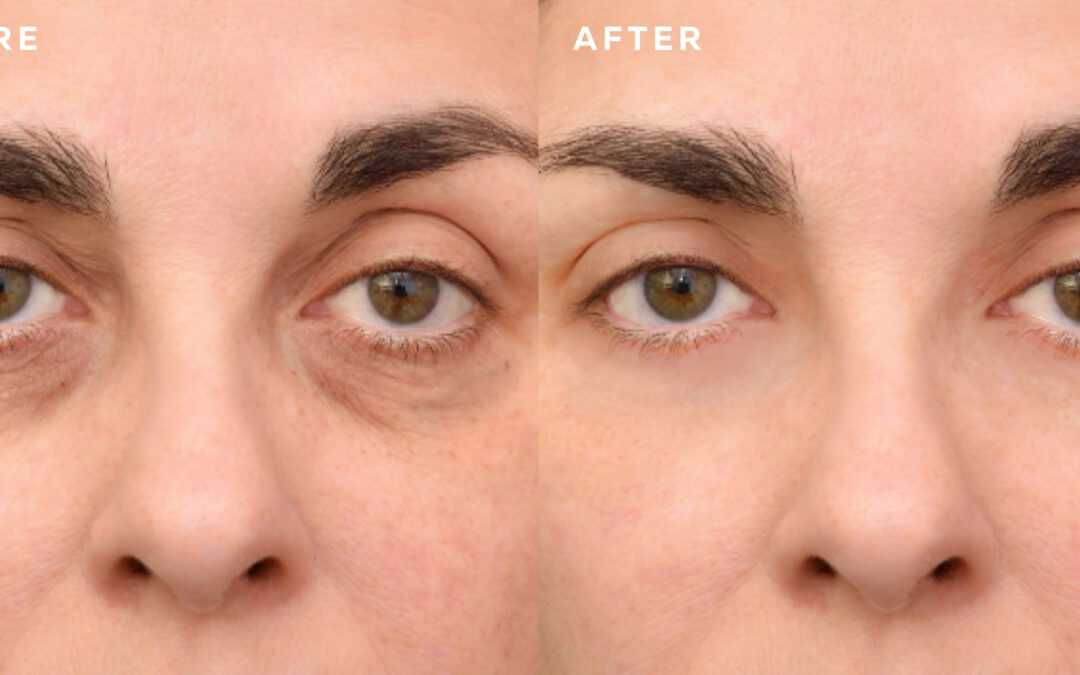Jump To Section
If you’re considering tear trough filler (under-eye filler) but have questions, you’re not alone. This guide will help you understand tear trough filler, their implications, and what to expect before proceeding.
What is Tear Trough Filler?
Tear trough filler is dermal filler specifically formulated for the delicate area beneath the eyes. These fillers aim to restore lost volume, reduce dark circles, and rejuvenate the skin, resulting in a fresher, more youthful appearance. Most practitioners use hyaluronic acid (HA) fillers, which are renowned for their safety and effectiveness. HA is a naturally occurring substance in the body that helps retain moisture, giving the skin a plump and hydrated look.

How Does Tear Trough Filler Work?
As we age, the area around the eyes can develop hollows and dark circles due to changes in facial structure, including diminished fat and bone density. The tear trough area can also be affected by genetics, lifestyle factors, and environmental stressors. When injected, tear trough fillers work to fill these hollows, restoring volume and smoothing the transition from the lower eyelid to the cheek. The procedure is typically quick, with noticeable results often seen immediately.
Treatment Benefits
The benefits of tear trough filler are manifold, including:
- Immediate Restoration of Volume: Fillers provide instant results, helping you look more rested and vibrant
- Reduction of Dark Circles: By adding volume, fillers can significantly diminish the appearance of dark circles
- Enhanced Hydration and Plumpness: HA fillers attract moisture to the skin, resulting in a more youthful and radiant look
- Long-lasting Effects: While results vary, the effects can last between 6 to 18 months, making this a worthwhile investment for many
- Minimally Invasive: The procedure is quick and involves minimal downtime, allowing you to return to your daily activities almost immediately
What Concerns Do They Treat?
Tear trough filler effectively addresses:
- Pronounced Hollows Under the Eyes: Ideal for those who notice significant sunken eyes
- Dark Circles: Particularly beneficial for those with genetic predispositions or age-related changes, helping to reduce dark circles
- Tired or Fatigued Appearances: Helps rejuvenate the face, making you look more alert and addressing tired eyes and under-eye bags
- Loss of Volume: Effective for individuals experiencing loss of volume in the under-eye area and under-eye wrinkles and lines

Before and After Images
Visual evidence is crucial for understanding the impact of tear trough filler. Before and after images often show significant improvements, with clients appearing more awake and youthful post-treatment.

Consultation Process
Before undergoing treatment at Freyja Medical, a comprehensive consultation with one of our qualified practitioners is essential. During this assessment, we will discuss your unique needs and concerns to determine if you’re a suitable candidate for tear trough filler. This is also an excellent opportunity to ask questions, gain a deeper understanding of the procedure, and address any potential allergies or health conditions. Our experienced practitioners will explain the various types of fillers we offer and assist you in selecting the one that best meets your needs.

Expected Results and Timeline
Results from tear trough filler are often visible immediately. Any swelling or bruising typically subsides within a few days, revealing a rejuvenated look. Most clients report looking more rested and youthful after the procedure. The effects generally last between 6 to 18 months, depending on individual factors such as metabolism, skin type, and lifestyle. It’s important to note that while some may experience longer-lasting results, others may find that they require touch-ups more frequently.
Safety, Risks, Side Effects
While hyaluronic acid fillers are generally safe, there are some risks involved. Common side effects include:
- Redness: Temporary redness at the injection site is common.
- Swelling: Mild swelling usually resolves within a few days.
- Bruising: Some patients may experience bruising, which is typically minor.
Serious complications, such as infections or vascular blockages, are rare but underscore the importance of choosing a qualified practitioner. Always ensure your injector is experienced and certified in administering fillers in the under-eye area.
Here at Freyja Medical, we are an accredited and award-winning skin clinic led by dermatology experts. All of our aesthetic practitioners have medical backgrounds and NHS roots, ensuring that you receive safe and effective treatment from experienced professionals. Click here to view our accreditations and awards.

Cost and Considerations
The cost of tear trough filler varies based on several factors, including the practitioner’s experience, location, and the amount of filler used. On average, treatments can range from £300 to £800 per session. At Freyja Medical, our tear trough filler prices start at £350. It’s essential to consider not only the financial aspect but also the expertise of the practitioner to ensure safe and effective results. Remember that cheaper options might compromise safety and quality, so investing in a qualified professional is paramount.

FAQs
Is the treatment painful?
While some discomfort may occur, many modern fillers contain anaesthetic to minimise pain. At Freyja Medical, we apply a prescription-only numbing cream for maximum comfort, ensuring a more pleasant experience.
Who is suitable for tear trough fillers?
Tear trough filler is ideal for those with pronounced hollows. However, individuals who are pregnant, breastfeeding, or have specific allergies should avoid this treatment. A thorough consultation will help determine your suitability.
How long does the procedure take?
Typically, the procedure lasts around 45-60 minutes. After applying anaesthetic cream for about 15 minutes, the actual injection process takes roughly 15 minutes.
What should I expect during recovery?
Post-treatment care is essential for optimal results. For at least 24 hours after the procedure, it’s advisable to avoid strenuous exercise, saunas, sunbeds, and direct sunlight. Waiting about two weeks before resuming facial treatments, like facials or HydraFacials, is also recommended.
For more FAQs, visit our tear trough filler page by clicking here.
Conclusion
If you’re interested in tear trough filler and want to learn more, book a consultation with our aesthetic specialist doctors or nurses at Freyja Medical! Click here to book online or contact us directly at 01978799688 or email us at [email protected]. Our expert team is here to guide you toward the best treatment options tailored to your needs and goals.


